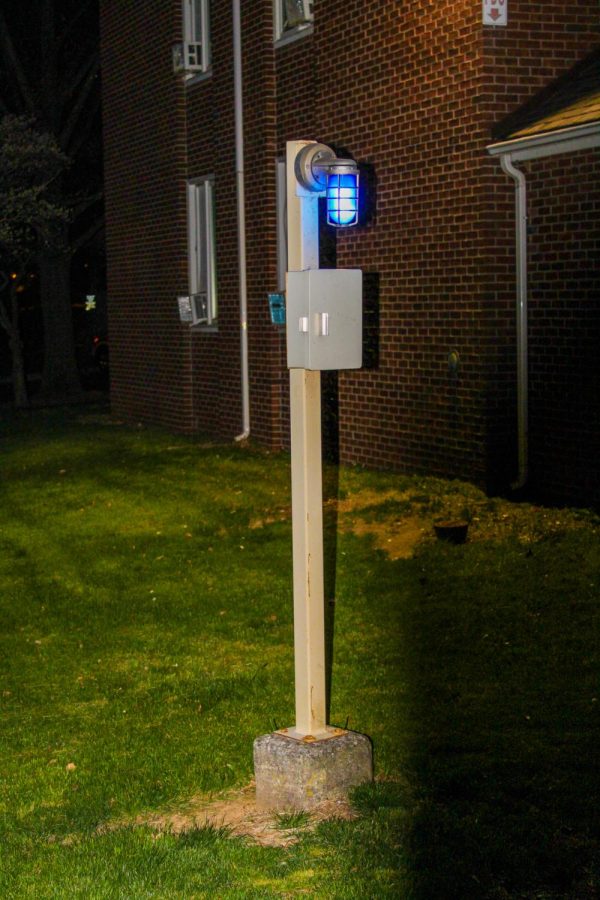The glowing blue lights dotting the campus, with boxes affixed to them containing emergency phones linked to Public Safety, are supposed to provide security for those in unsafe situations. Some have said, however, that the lights lack visibility and the call boxes could be difficult to open.
“When you’re walking down the Quad, you don’t see many blue lights except where there’s residential areas,” Ani Brutus ’26 said. “You would have to run quite a bit to access it, and that’s quite concerning to me. In the main entryway of South College, there was actually a blue light system [but] the box has been removed.”
Public Safety provides a map of the emergency phone locations – there are 73 standalone call boxes on campus, in addition to 36 elevator emergency phones installed in elevators.
“These phones should be used to report suspicious activity, crimes in progress, or any emergency situation,” Director of Public Safety Jeff Troxell wrote in an email.
Troxell explained the process of making a blue light call.
“If you pick up that phone and you dial us, or you hit the red button that says emergency, it comes into our dispatch as a priority call, and it identifies the location of that phone,” Troxell said. “For example, if somebody’s in a stressful situation and they want to report a crime, they hit a button … [and] we dispatch an officer to that location.”
Brutus, a Student Government representative, discovered a number of flaws while surveying the blue light call boxes around campus at night, bringing their concerns to the most recent Student Government meeting.
“I actually tried opening [a] box, but it wouldn’t open,” Brutus said. “I also encountered others that do not work … I was very concerned because these systems are put in place … in case of an emergency. Say that someone actually needed this, and it didn’t open.”
Troxell acknowledged that some blue light call boxes can be difficult to open and maintained that the system receives frequent maintenance.
“We test them on a regular basis, but when they do they need to be fixed, we have to make a decision,” Troxell said. “Can we fix them with the capabilities that we have, or do we just install a new phone?”
Sarah Murphy ‘24, a co-president of Pards Against Sexual Assault stressed the importance of the blue light call boxes to students’ safety on campus.
“We need to make sure that we are doing at least the minimum to protect our students,” Murphy said.
Brutus noted that the blue light near Marquis Hall is not visible from anywhere but the entrance to the residence hall.
“You wouldn’t know that it’s there unless you enter that area,” Brutus said. “That could speak to a larger issue of the boxes being inaccessible.”
Some call boxes, such as those attached to the exterior of Kirby House, do not have blue lights at all.
Troxell said that blue light call boxes are placed in the most frequently traveled areas and on all residence halls. He said that response times for calls made at blue lights are the same as if a regular emergency call came through to dispatch; students can typically expect an officer to arrive at the scene in under 90 seconds.
Murphy proposed to Katy Bednarsky, the Student Advocacy and Prevention Coordinator, that a blue light be placed on Cattell Street near Wawa and Milo’s. However, Bednarsky informed her that the college would have to get permission from the city because the street is not directly on campus property.
“On the weekends, there are so many kids out, drinking and crossing the street, and it’s … one of the most unsafe spots on campus,” Murphy said. “We have college students frequenting this area, especially under the influence of drugs and alcohol.”
Murphy also mentioned that those in wheelchairs are often unable to reach the blue light emergency phones.
“Somebody who’s disabled is probably not going to be able to access these blue lights in the first place,” Murphy said. “I think that taking care of and protecting the students, no matter how much money that costs, is the bottom line, first responsibility of the school.”




































































































